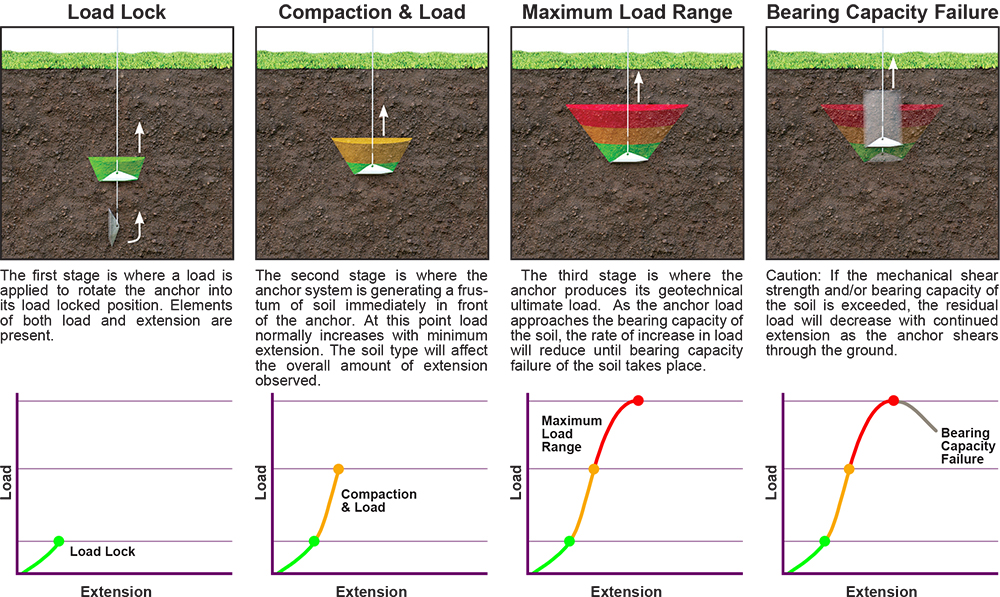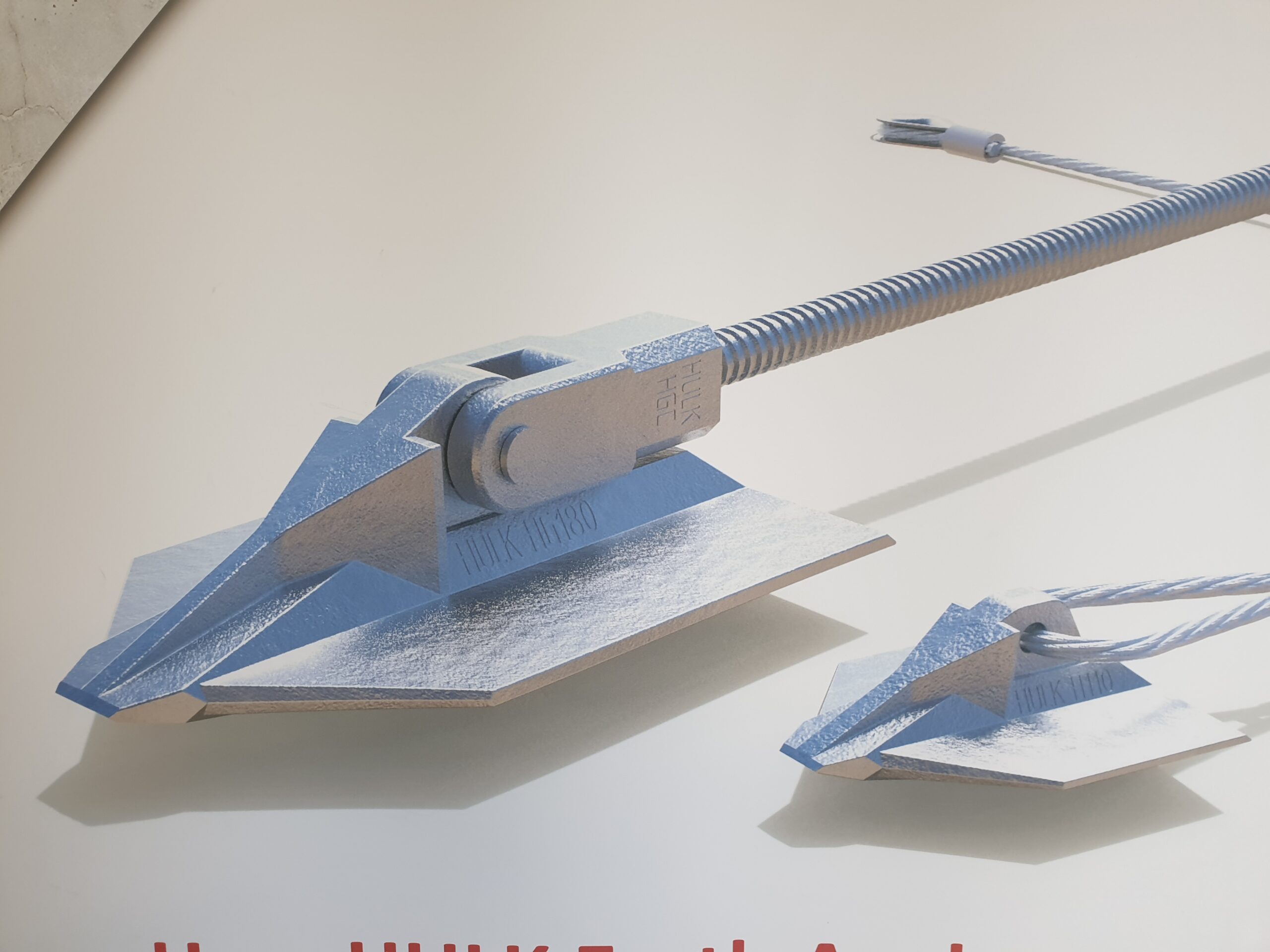Just How Heavy-Duty Earth Anchors Job: A Comprehensive Guide to Dirt Anchoring Solutions
Durable Earth supports play a crucial role in providing security and assistance in different construction applications. By installing deeply right into the ground, they withstand side and upright forces effectively. Various sorts of anchors cater to numerous dirt conditions, making them functional. Understanding their auto mechanics and installation techniques is essential for making the most of performance. What aspects affect their efficiency, and just how do they compare to typical methods? The answers might stun you.
Comprehending Sturdy Earth Anchors
Heavy-duty Earth supports function as important parts in various building and landscape design jobs, providing stability and support in tough soil conditions. These supports work by being installed right into the ground, where they withstand lateral and vertical pressures. Their design enables protected accessory to structures, guaranteeing they remain anchored against dirt motion or exterior loads.The efficiency of sturdy Earth anchors largely depends on the kind of dirt and the support's setup deepness. Proper setup strategies are vital, as they determine the anchor's holding capability. Ecological elements, such as moisture and freeze-thaw cycles, can likewise impact performance.These anchors are frequently utilized in applications varying from securing fencings and retaining walls to maintaining momentary structures throughout negative weather. Recognizing the principles behind sturdy Earth supports is vital for experts seeking to improve the resilience and safety and security of their tasks.
Sorts Of Heavy-Duty Earth Anchors
Various kinds of sturdy Earth anchors are made to satisfy certain requirements based on soil conditions and project requirements. Helical supports, featuring screw-like blades, work in softer soils, providing high load capabilities and very easy installment. Driven anchors, which are hammered into the ground, appropriate for rocky surfaces and supply instant lots support. Tie-back anchors are commonly made use of in keeping wall surface applications, enabling side assistance by anchoring right into the ground at an angle. Another type is the cast-in-place anchor, perfect for concrete applications, as they are incorporated right into foundations for enhanced security. Lastly, soil screw supports are versatile choices that can be utilized in various dirt types, supplying trustworthy tension and compression capacities. Each type offers distinct applications, making sure security and safety in building and construction and landscape design projects. Comprehending these alternatives enables notified choices in selecting the appropriate Earth securing service.
The Mechanics of Dirt Anchoring

Comprehending the mechanics of dirt anchoring calls for an exam of different kinds of Earth anchors and their installation methods. Each anchor kind provides special qualities that influence its efficiency in different soil problems. Correct installment methods are important for maximizing the anchoring system's stability and performance.
Kinds of Earth Anchors
Earth anchors, crucial components in soil anchoring systems, been available in several types, each made for details applications and soil conditions. The most common types include screw anchors, which are turned right into the ground, supplying strong lateral resistance. Helical supports include blades that permit for effective installation in different dirt kinds, making them appropriate for both short-lived and irreversible applications. Driven anchors, usually made from steel, are inculcated the soil and are effective in rough or dense environments. Auger supports use a helical design to promote setup in softer dirts. Plate supports are composed of a level plate buried flat, dispersing tons over a bigger area, ideal for applications calling for high load abilities in natural soils.
Installation Strategies Described
Proper setup strategies are important for the efficiency of soil anchoring systems. The procedure commonly starts with website analysis, verifying the picked place can sustain the anchor's load. After figuring out the correct anchor kind, appropriate hole depth and angle have to be developed. The setup involves driving the anchor right into the ground using customized equipment, such as hydraulic or hand-operated vehicle drivers, to accomplish best embedment. Post-installation, tensioning the anchor is vital to assure stability; this is frequently confirmed with lots testing. Furthermore, bordering dirt problems ought to be monitored to stop displacement. Adhering to these methods not just improves the anchor's efficiency however likewise extends its life-span, supplying reliable support for different applications.
Applications of Heavy-Duty Earth Anchors
While sturdy Earth supports are typically associated with building and landscape design, their adaptability encompasses a range of applications throughout various industries. In civil design, they provide essential support for maintaining wall surfaces, ensuring security in areas susceptible to soil erosion. The marine industry makes use of these anchors for protecting anchors and marinas, protecting against motion brought on by currents and trends. Additionally, in the telecom market, sturdy Earth supports are considerable for supporting cell towers and other high frameworks versus wind forces. Agricultural applications likewise benefit, as these supports can safeguard frameworks like greenhouses and animals fence, guaranteeing they withstand extreme weather condition conditions. Additionally, in renewable resource jobs, such as wind farms, Earth supports play a crucial function in protecting wind turbine foundations, boosting total safety and security and performance. This wide range of applications highlights the versatility and integrity of sturdy Earth supports throughout numerous fields.
Benefits Over Conventional Anchoring Techniques
Traditional anchoring techniques have long been relied upon for stability, sturdy Earth anchors supply substantial benefits that enhance efficiency and efficiency. One significant advantage is their exceptional load-bearing capacity, which allows them to hold up against higher pressures without failing. This strength makes them ideal for demanding applications, such as in building and construction and energy installations.Additionally, sturdy Earth supports are created for deeper setup, offering higher security in various dirt conditions, including loose or sandy soils. Their resistance to corrosion and environmental variables ensures a much longer lifespan and decreased maintenance costs contrasted to traditional methods.Moreover, these anchors can be set up with very little disturbance to the surrounding area, protecting the integrity of the landscape. Generally, sturdy Earth anchors provide a effective and trustworthy solution for securing demands, surpassing the limitations frequently related to standard anchoring methods.
Installation Process and Finest Practices
The installment procedure for click reference dirt securing options begins with complete prep work and website evaluation to assure peak performance. Following this, a detailed setup guide offers clear instructions for efficient application (Manta Ray anchors). Complying with these ideal techniques is essential for achieving resilient and dependable anchoring results
Prep Work and Site Assessment
Effective prep work and extensive website assessment are important action in the Visit Your URL installment of dirt anchoring remedies. Prior to setup, the dirt type have to be analyzed to establish its bearing capability and viability for securing. Performing a geotechnical survey can provide crucial details concerning soil composition, dampness degrees, and potential ground movement. Furthermore, identifying existing structures, greenery, and energies is crucial to avoid interference throughout setup. The location needs to be cleared of debris and barriers to assure risk-free gain access to for tools. Weather condition conditions need to likewise be kept track of, as unfavorable problems can impact both safety and setup effectiveness. By carefully preparing the site and assessing all relevant factors, the chance of effective anchor performance is considerably boosted.
Step-by-Step Installment Guide
A complete installment process is important for attaining ideal performance of dirt anchoring options. The installation starts with picking the appropriate anchor type and ensuring the website is clear of particles. Next, proper opening positioning is determined based upon load demands. When the area is developed, holes are pierced to the specified depth and size using the appropriate devices. The anchor is then placed right into the opening, ensuring it is straightened properly. After protecting the anchor, soil is backfilled and compacted to boost stability. It is crucial to adhere to manufacturer standards throughout the procedure. A post-installation inspection verifies that the anchors are appropriately located and working as planned, giving trustworthy assistance for the intended application.

Maintenance and Examination of Earth Anchors
Routine upkeep and examination of Earth supports are crucial for making sure long-term efficiency and security. Regular checks permit the early detection of issues such as rust, loosening, or soil movement. Inspectors must look for indications of rust or destruction on the support components, specifically at the link points. In addition, the bordering dirt should be analyzed for erosion or changes in moisture web content, which can affect anchor effectiveness.It is a good idea to develop a regular examination timetable, preferably a minimum of yearly, depending on environmental conditions. Throughout evaluations, all visible elements ought to be cleansed to remove dust or debris that can hide prospective issues. Any kind of indicators of distress, such as turning structures or unusual settling, should trigger immediate analysis. Proper paperwork of assessments can help in monitoring support performance with time and assist in timely maintenance activities, ensuring the supports stay practical and trusted.
Often Asked Questions
What Products Are Heavy-Duty Earth Anchors Generally Made From?
Sturdy Earth supports are commonly built from sturdy materials such as galvanized steel or stainless-steel, making sure strength and resistance to corrosion. These products provide durable support and stability in various soil problems and applications.
Just How Do Soil Problems Influence Support Performance?
Soil problems significantly affect anchor efficiency. Elements such as soil type, dampness material, and compaction influence the anchor's grip and Recommended Reading stability, with cohesive dirts commonly providing much better resistance than sandy or loose dirts, impacting general efficiency.
Can Heavy-Duty Earth Anchors Be Recycled After Removal?
Durable Earth supports can be recycled after elimination, provided they are inspected for damage and wear. Proper cleaning and upkeep improve their long life, guaranteeing reliable performance in subsequent installments when conditions permit safe reinstallation.
What Are the Ecological Effects of Using Earth Anchors?
The environmental impacts of making use of Earth supports consist of prospective dirt disturbance, interruption of neighborhood ecological communities, and possible contamination of groundwater. If utilized properly, their benefits often outweigh these worries, advertising security in different applications.
Exactly how Do I Choose the Right Support for My Task?

Comments on “Professional’s Pre-Installation tensile load anchors Inspection List”